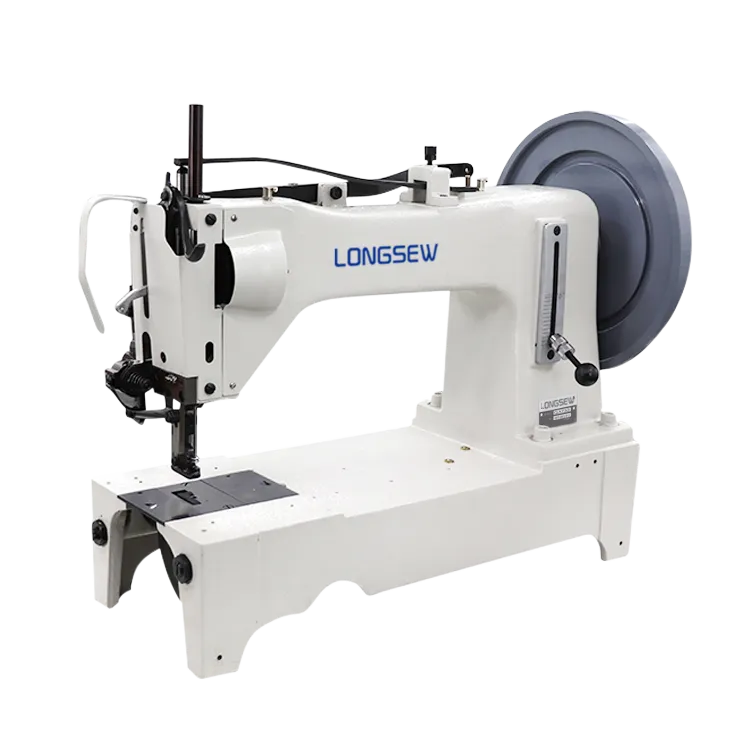flatbed stitching machine
The Innovation Behind Flatbed Stitching Machines
In the world of industrial sewing, efficiency, precision, and versatility are paramount. Among the various machines that have transformed the textile industry, the flatbed stitching machine stands out for its unique design and functional advantages. This article delves into the characteristics, applications, and benefits of flatbed stitching machines, highlighting why they are an essential tool in modern garment manufacturing.
Understanding Flatbed Stitching Machines
Flatbed stitching machines are specialized sewing machines characterized by their flat working surface. Unlike other sewing machines that may have a curved or cylindrical base, the flatbed design allows for easier manipulation of large fabric pieces. This feature is particularly vital in the garment industry, where large panels of fabric or finished garments must be sewn together with precision.
These machines come in various configurations, including single-needle and multi-needle options, enabling different types of stitching from basic straight seams to more complex decorative stitches. The functionality is not limited to simple sewing tasks; flatbed machines can be equipped with specialized attachments to handle various stitching styles and techniques, making them a versatile tool for different fabric types, from delicate silks to sturdy denims.
Applications in the Textile Industry
Flatbed stitching machines are widely used across several sectors within the textile industry. Their primary applications include
1. Garment Manufacturing They are indispensable in factories for producing ready-to-wear clothing. The flat surface allows for smooth movement of large fabric pieces, significantly enhancing productivity and ensuring high-quality seams.
2. Home Textiles These machines are also employed in the production of bed linen, curtains, and other home textile products. Their precision allows for neat finishes, which are essential for consumer items.
3. Automotive and Upholstery Work Flatbed machines are valuable in sectors where heavy fabrics are commonplace, such as in the production of car interiors and furniture upholstery. The machine's ability to make strong, secure stitches is crucial for durability in such applications.
flatbed stitching machine

Advantages of Flatbed Stitching Machines
The design of flatbed stitching machines brings with it numerous advantages. Some key benefits include
- Ease of Use The flat working surface permits easy handling of bulky items and intricate designs. Operators can see their work clearly and perform tasks with greater precision.
- Versatility With the ability to sew a variety of fabrics and perform different stitching techniques, flatbed machines can cater to numerous production needs. This versatility reduces the need for multiple machines, making production lines more efficient.
- Speed and Efficiency These machines are designed for high-speed operation, allowing manufacturers to meet demanding production schedules without sacrificing quality.
- Reduced Setup Time Changing between different stitching tasks can be accomplished quickly and efficiently, resulting in less downtime and improved overall productivity.
Conclusion
The flatbed stitching machine remains a cornerstone of the textile manufacturing industry. Its innovative design, combined with its robust functionality, makes it a preferred choice for garment production, home textiles, automotive upholstery, and more. As the industry continues to evolve, the importance of these machines in achieving higher efficiency, better quality, and enhanced flexibility cannot be overstated.
In an era where fast fashion and quick turnarounds dominate the market, flatbed stitching machines empower manufacturers to rise to the challenge. By investing in advanced technologies and skilled operators, companies can harness the full potential of flatbed stitching machines, driving their businesses forward and setting new standards in textile manufacturing. As we look ahead, it is clear that these machines will continue to play a vital role in shaping the future of the fashion and textile industries.
-
Heavy Duty Leather Sewing Machine: A Must-Have for Professional LeatherworkNewsMay.28,2025
-
Leather Sewing Machine: Essential for High-Quality LeathercraftNewsMay.28,2025
-
Extra Heavy Duty Sewing Machine for Premium Leather ApplicationsNewsMay.28,2025
-
Walking Foot Cylinder Arm Sewing Machine: Precision and Power CombinedNewsMay.28,2025
-
Industrial Cylinder Arm Sewing Machine: Engineered for High-Performance StitchingNewsMay.28,2025
-
Cylinder Bed Sewing Machine: A Powerful Solution for Precision StitchingNewsMay.28,2025
-
Zigzag Sewing MachineNewsMay.12,2025





























